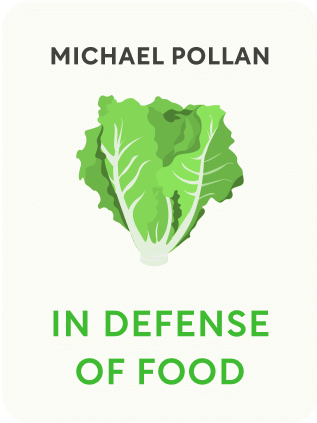

This article is an excerpt from the Shortform book guide to "In Defense of Food" by Michael Pollan. Shortform has the world's best summaries and analyses of books you should be reading.
Like this article? Sign up for a free trial here .
What are the top four diet-related diseases? Is the damage done by the modern diet reversible?
Americans suffer from a wide range of killer diet-related diseases, the main ones being obesity, cancer, type-II diabetes, and heart disease. However, this hasn’t always been the case; before the second world war, the rates of dietary diseases were low.
Read about the rise of diet-related diseases.
The Rise of Diet-Related Diseases
Today, diet-related diseases such as diabetes and heart disease are so common, there’s a feeling of inevitability surrounding them. People look to medicine to save them and can’t imagine a time when these illnesses weren’t prevalent. But before the second world war, the rates of killer food diseases were low. During the early 1900s, scientists started to notice a higher frequency of killer disease diagnoses. Reports from health professionals, who’d witnessed the entry of Western civilization into remote indigenous cultures and the domino effect of the disease that followed, piqued their interest. Discussions about the relationship between industrialization and health began in the research and science communities.
One person heavily involved in this discussion was a Canadian dentist named Weston A. Price. Price moved to Ohio in the 1930s and started to see a rapid decrease in formally healthy teeth. He proffered that the new modern diet was responsible for increased tooth decay.
In 1934, Price was one of many who debated whether hygiene or the modern diet was to blame for the increased dental problems. Hygiene won the day, likely because it was easier to change and more profitable for dentists. Following this, Price closed his practice and traveled to isolated communities unaffected by the modern diet. His findings included the following:
- People who ate traditional diets showed no evidence of oral degeneration or malformations.
- Their diets were much higher in vitamins A and D, almost ten times more than in the diets of modern society.
- One diet wasn’t better than another because all focused on fresh animals and plants raised on and grown in unadulterated soils.
- The health of the people was better when the health of the animals was better.
- Butter made from cows fed grasses had higher levels of vitamins A and D than those raised during the winter.
Price saw the connections among soil, grass, animals, and humans. He reasoned that the industrialization of food broke the natural order of things in two ways: depleting soils of nutrients, thereby the food grown in them, and destroying the surviving nutrients through processing. These actions intervened in the natural momentum of nutrients in the food chain, and the physiological needs of the human body were no longer satisfied.
Is the Damage Reversible?
Until 1982, it was unclear was whether the damage inflicted by the modern diet could be reversed. A study of 10 Aborigines in Australia provided the first grain of hope that it could.
In summer 1982, a research scientist, Kerin O’Dea, asked 10 formerly bush-dwelling Aborigines to return to their previous lives as hunters and gatherers to see if their health improved. Since moving to civilization years before, all had developed Type 2 diabetes and were at high risk for heart disease. They’d also developed “metabolic syndrome,” a disorder in which the body is unable to metabolize carbohydrates and fats appropriately through insulin production.
When the Aborigines returned to the bush, they lived by the coast and consumed seafood, birds, grubs, and kangaroos. In search of more plants, they moved inland and ate freshwater fish, turtles, crocodiles, birds, kangaroos, yams, figs, and honey. This diet was vastly different from the one at the western settlements, which included mostly flour, sugar, carbonated drinks, alcohol, and cheap meat.
After 7 weeks, O’Dea tested their blood and found that every aspect of their health had improved.
- They each lost an average of 18 pounds.
- They had decreased blood pressure.
- Their triglyceride levels normalized.
- There was an increase of omega-3 fatty acids in their systems.
The results revealed that the negative health outcomes experienced by western populations could be reduced by changes in diet. The beauty of O’Dea’s study was her lack of focus on nutrients. She didn’t break down the nutrients in the foods the Aborigines ate. She focused, rather, on their overall dietary patterns.
The focus on dietary patterns makes it difficult to pin down exactly what needs to change in the modern Western diet, but it raises a lot of questions about whole foods and health. These questions are more important than ever:
- Two-thirds of Americans are obese.
- One-fourth have metabolic syndrome.
- Approximately 54 million people are pre-diabetic.
- Type 2 diabetes has increased by 4% since 1990 (about 20 million people).

———End of Preview———
Like what you just read? Read the rest of the world's best book summary and analysis of Michael Pollan's "In Defense of Food" at Shortform .
Here's what you'll find in our full In Defense of Food summary :
- Why eating a Western diet is killing you
- How the rise of low-fat foods contributed to the rise of obesity and diabetes
- What to eat if you want to restore a healthy relationship with your food






